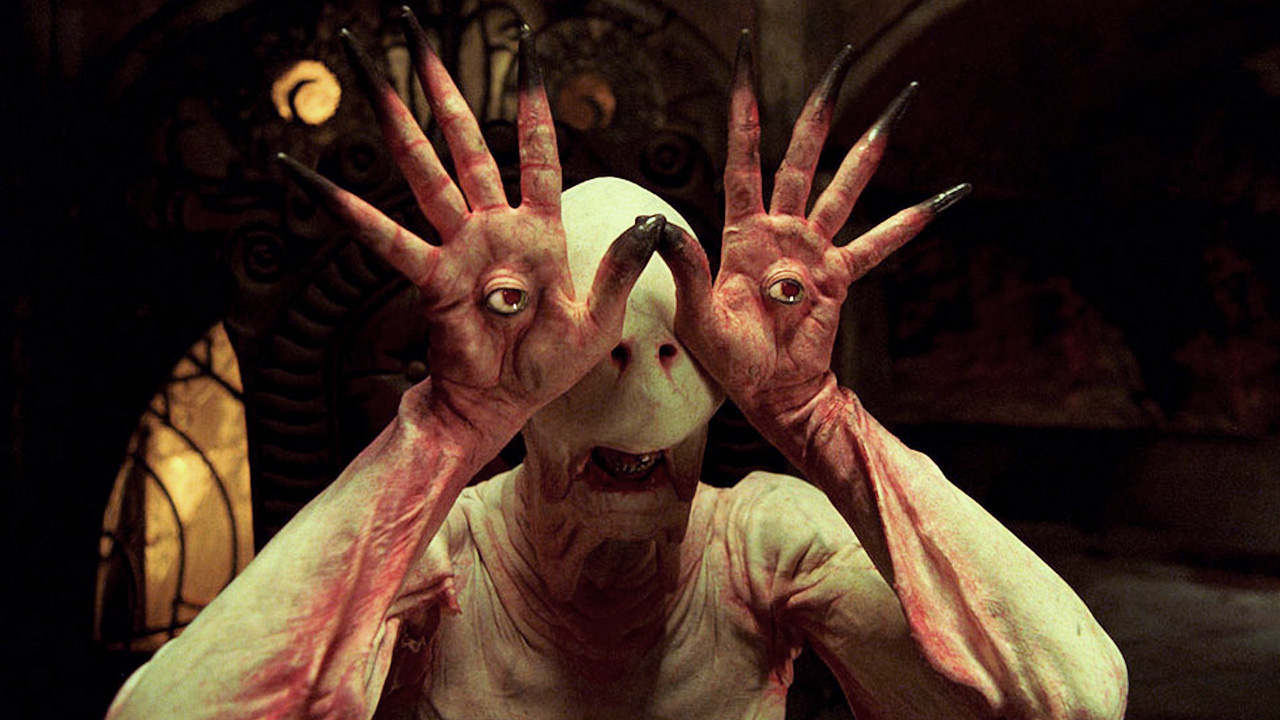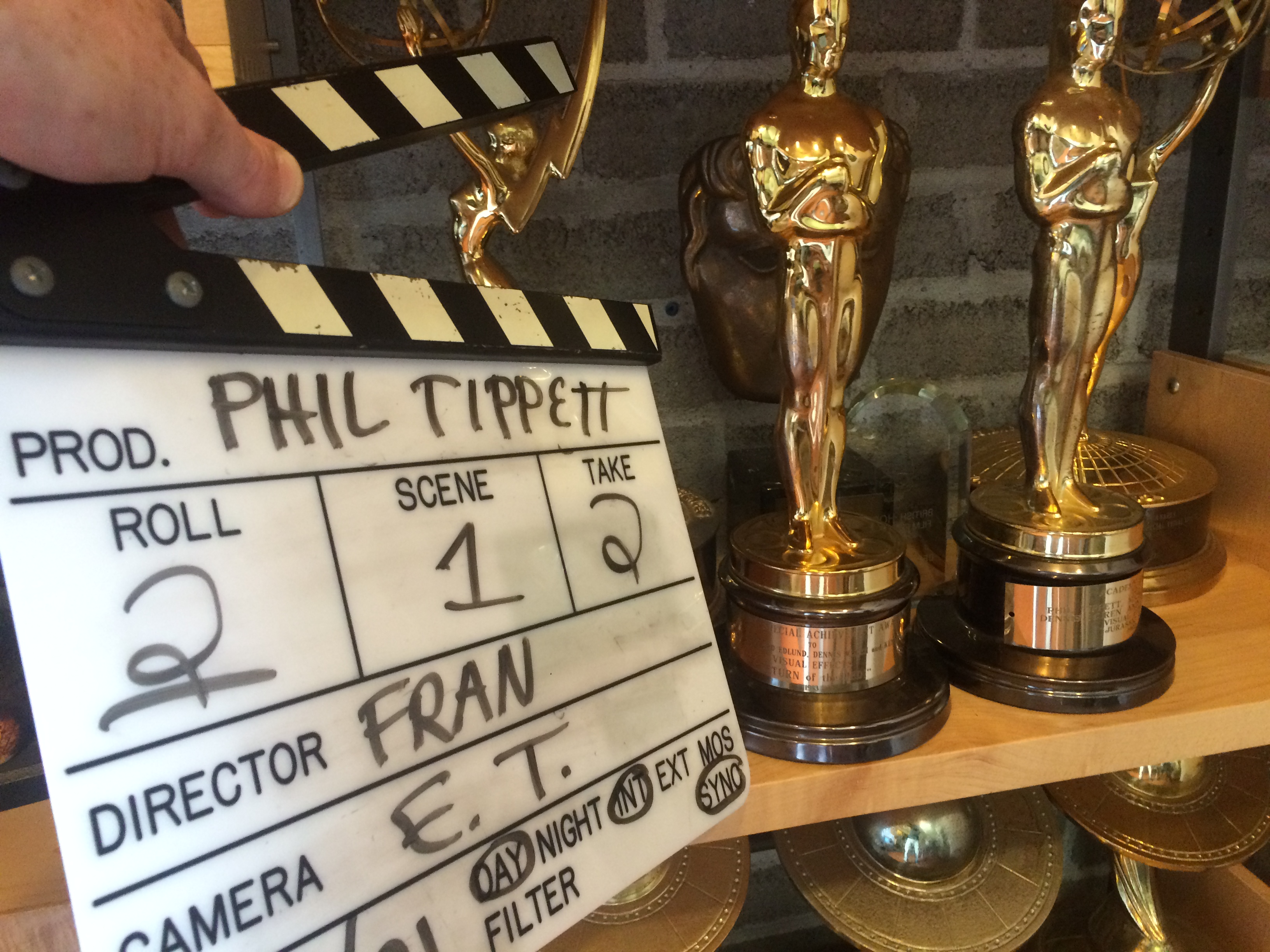Talk to Fran Lozano about practical special effects and her eyes light up. Lozano, who went to film school in her native Argentina and now works mostly in the U.S. in advertising, is working on a documentary about everything non-digital when it comes to special effects, one of cinema’s long-lasting crafts. Everything, that is, that made movies feel like magic before Computer-Generated Imagery (CGI) – think Avatar and any superhero movie nowadays – came to dominate Hollywood cinema. It’s no surprise she’s drawn to the work of Guillermo del Toro. As someone who got his start in the special effects make-up department, he’s a director whose monsters always feel authentic and real, like they have the imprint of whoever made them.
With her project, #SFX: a Documentary on Magic, Craft & the Art of Believing, she’s part of the 2017 Latino Media Market program as a Fellow. That means that during this month’s NALIP Media Summit, she’ll get a chance to meet one-on-one for scheduled pitch meetings with industry representatives who’ll offer her sound advice on how to advance this documentary-in-the-making to the next level.
Ahead of the NALIP Media Summit later this month, Remezcla chatted with Lozano to get the scoop on her intriguing project. She talked about how #SFX has been a labor of love, discussed why practical special effects should be celebrated, and even shared how she got some of the best and brightest (including the guy responsible for the stop-motion effects in the OG Star Wars films!) to talk to her. Check out some highlights below.
The NALIP Media Summit takes place in Los Angeles on June 22-25, 2017. Get your Summit pass here.
Where did the idea to make a documentary about special effects come from?
I always loved documentaries and biographies. That’s my passion. I wanted to find a subject that I was really interested in. A few years ago, I had a friend of mine who went to school with me in Argentina (he’s from Bolivia) who lives here and works on make-up effects. That industry has been changing a lot, for a while now. It’s an industry that was huge, mostly in the 80s, and has been shrinking quite a lot. Everything’s being replaced with CGI. He’s struggling to find work. Before they had a bunch of warehouses and labs, and now there’s only a handful here in L.A. So I started to think about that and how we’re losing that craft, in a way. And when I was researching, I found this guy, Mike Elizalde (Hellboy II: The Golden Army). I read something about him and thought, I need to find this guy. I need to start with this guy. What he was talking about in that thing I read was about touch, and how when you make something with your own hands, there’s an energy that goes into it. There’s a different connection. I started thinking about what it is we’re gaining and losing when we go full digital. Somehow we’re losing something. My angle is a bit of an homage to the craft of practical special effects.
How are you structuring the film?
I want to have 7-8 interviews. I’m not too big on documentaries that interview like 50 people. Because I want to get know these people. It’s not just what you say but who you are. So far I have 5 interviews that I have been doing for 2 years. I’m beginning to pre-edit, to work on a basic structure based on what I have. I interviewed, Mike, who was my first interview. I interviewed Phil Tippett, who owns Tippett Studio in Berkeley, California, and he has done everything. But he started with Star Wars, all the stop-motion for the original trilogy. I mean, he’s the guy who designed Jabba the Hutt! Then I interviewed Matt Winston. He’s the son of Stan Winston, who’s no longer with us. He had a gazillion Oscars. He did Jurassic Park, Terminator, Predator. I mean: everything! He’s the guy who took the industry of make-up special effects to a different level. My fourth interview was Howard Berger, who’s partners with Greg Nicotero. They do The Walking Dead, which is what they’re most known for, even though they also have an Oscar for Chronicles of Narnia. And also, they did Boogie Nights… [and that infamous Mark Wahlberg prosthetic!] And then my fifth interview was an actor by the name of Doug Jones.

Del Toro’s faun!
Yes, that’s him! So that’s where I am, so I’m beginning to edit. And I’m working on getting a writing partner. Because I need that. It’s always easier when you have somebody else for that process. I applied for NALIP and now I’m like aaah! And what I’m working on now is trying to get Tarantino.
Tell me about that. Why Tarantino?
I’m not sure if he’s the only one still doing 100% practical but his latest film [The Hateful Eight] was even shot in film, which is mindblowing nowadays. Clearly he can do whatever he wants. If he wanted to do something digital he could. But he’s very authentic. And for me that’s the word that describes Tarantino, whether you like his style or not. He’s extremely authentic. Like, even if you say the word “digital” on set you get yelled at. He’s very raw. I also respect him as a director which is why I want to interview him.
Looking at this list it skews, quite obviously, male and I was curious if that was ever a consideration, or if it was just a matter of reflecting the industry at large.
Yes, I think about that, but it’s not going to come into play. Like 99% people who work specifically in these kind of make-up special effects, are men. It just happened to be men. There are only a few females who are up there with these guys, when it comes to awards and those kind of things. So this list of names of people I interviewed are the ones that I wanted after doing lots of research. And then a few friends of mine actually also pointed that out, and said, what about this angle [about this gender disparity]? And, I see it. But that’s not what I’m talking about necessarily. I’m not vindicating the men, but that’s not what I’m talking about. I’m talking about a craft that’s being lost. I was not really talking about that, so I feel that if I go there, it’s a different documentary. It’s fine, but it’s not my angle.
I’m also not interviewing anyone on the digital side. Sometimes we’re so into perfection that we lose the subtleties. Actually if you see the original Star Wars as an adult, you’re like “Oh my god, this is so fake!” Because it is! Like, that’s a toy. But it didn’t matter back then. You bought it. We all bought it. Even though we know it’s fake. So that’s the angle. You know, when I submitted the project for NALIP, I am from Argentina, but I had that moment of “Oh, this has nothing to do with the Latin world.” But it is what it is. It’s a valid point but it has nothing to do with what I’m trying to tell.

To close, I wanted to ask about this idea you have of having a stop-motion creature narrating the documentary.
I thought about that a lot. I like biographies and there’s always this voiceover. Not in every one, but you know, I like it when there’s a voiceover that completes the information. Then I was thinking that this is so visual and we’re talking about all of these things, so I thought “Why don’t we have an on-screen narrator be a stop-motion creature?” To me that seemed perfect. So obvious. It’ll be a very traditional thing but it will be cohesive with the theme of the film. I’ve contacted the guy I’ll be working with for that but since we’re still working on the structure so we don’t want to get ahead of ourselves. When I say that this is an extremely independent project, it’s as independent as anything else. It’s me leading it on my own. I’m super fortunate that I have a team that’s helping me for free, that are volunteering their time. I am beyond blessed because otherwise I wouldn’t be able to do it. But we have to take it step by step, so that’s what I’m still trying to do, before finalizing any of that stuff. Fortunately, that’s where I am. It’s all just part of the process.







